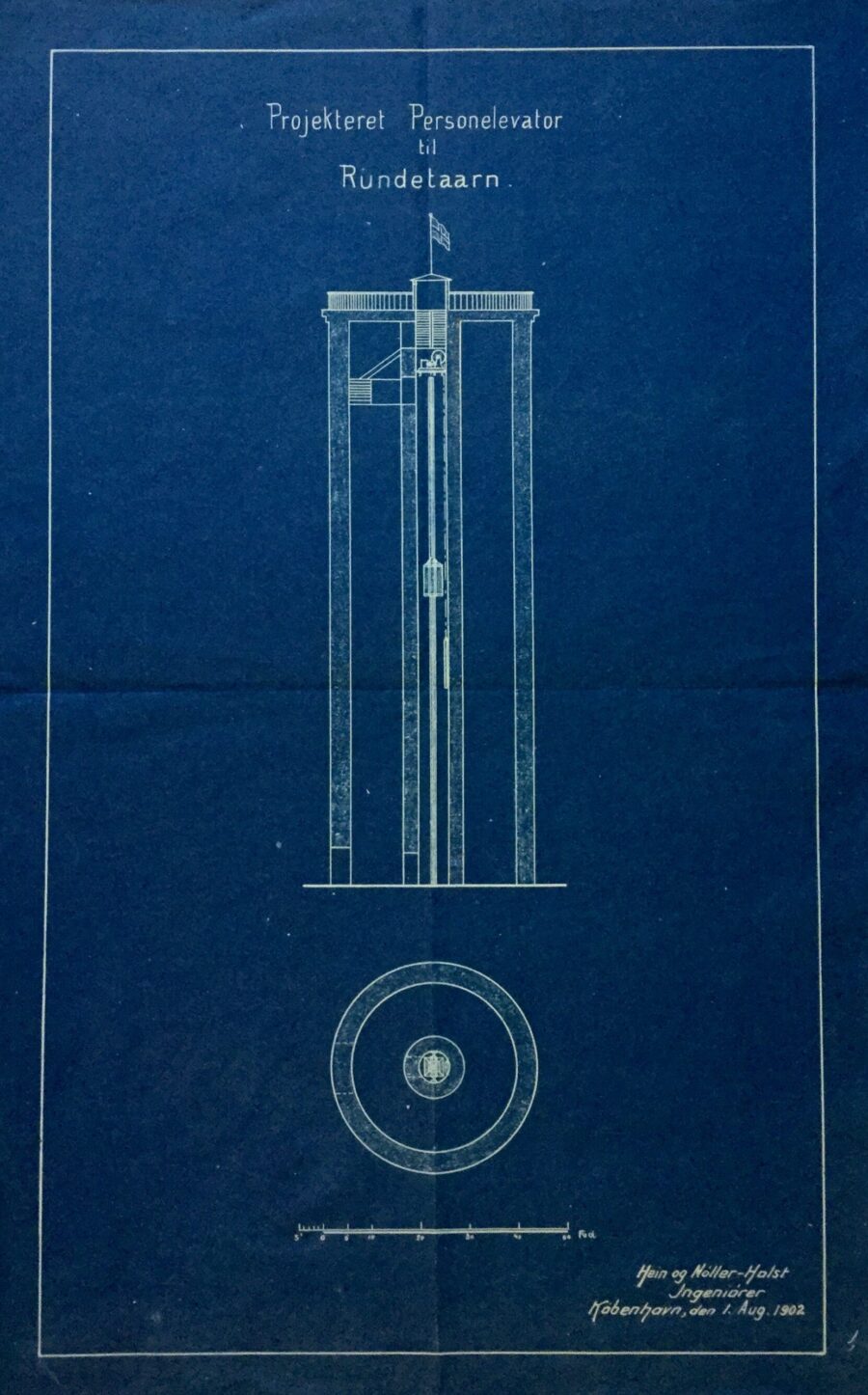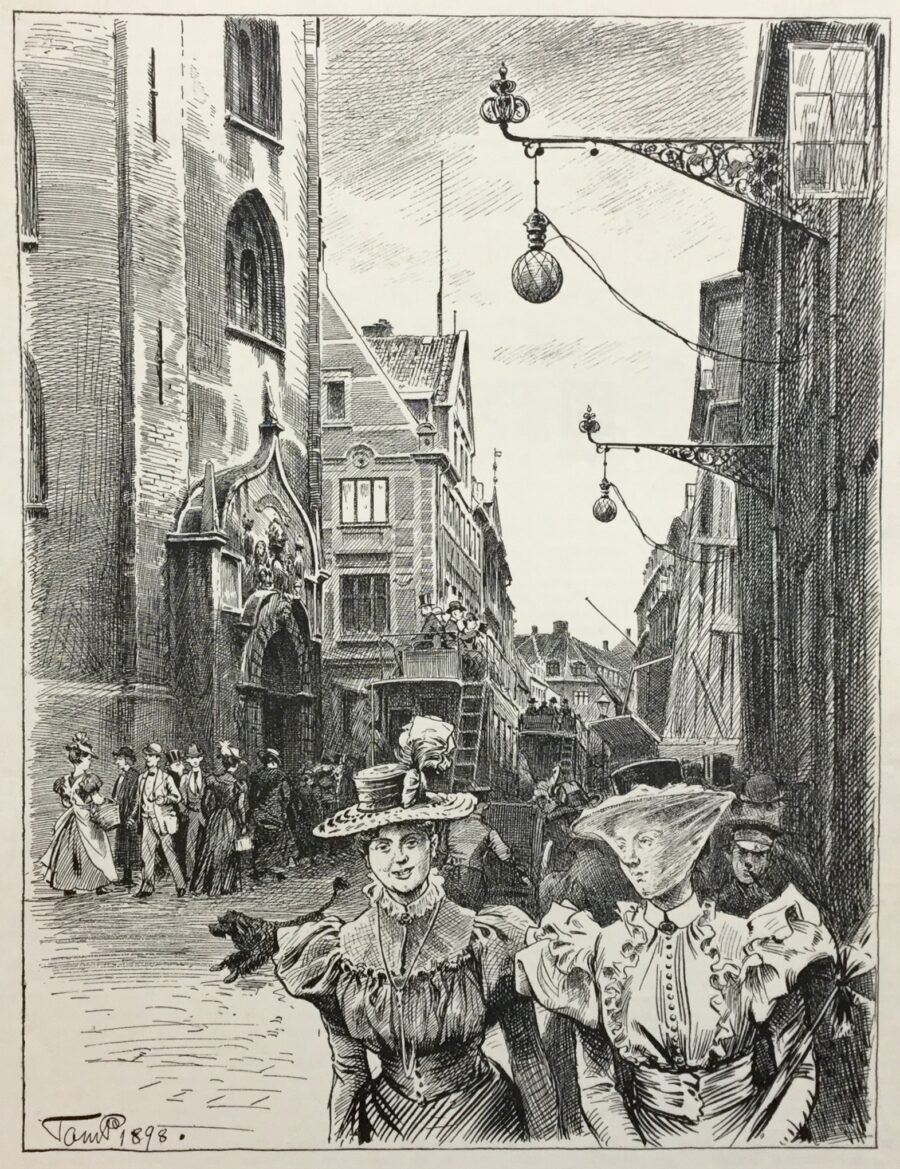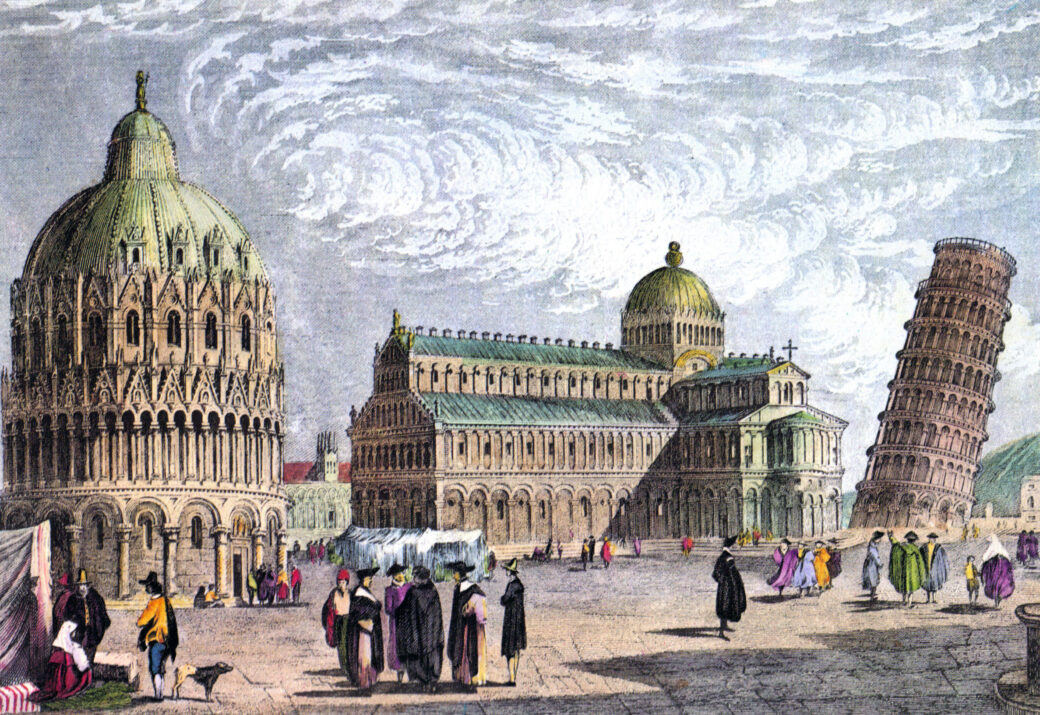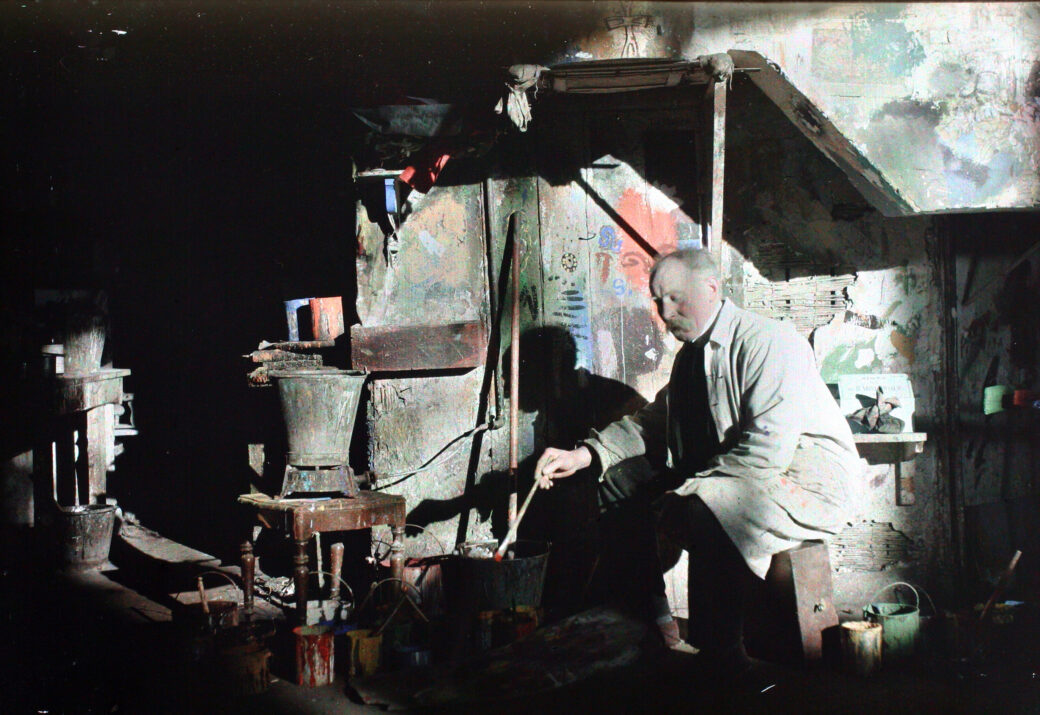This website uses cookies so that we can provide you with the best user experience possible. Cookie information is stored in your browser and performs functions such as recognising you when you return to our website and helping our team to understand which sections of the website you find most interesting and useful.

Moving the Round Tower
As far as is known, no one has yet made serious plans to make artificial snow and do ski jumping in the Spiral Ramp, but apart from that, it is hard to come up with a crazy idea about the Round Tower that has not already been thought of.
For instance, we had engineer Lorenzen from Baden in Southern Germany driving up and down the Spiral Ramp with his car on an early Sunday morning in July 1902. There was, too, that time it was suggested to construct a passenger lift in the hollow core in the middle of the tower, an idea that went as far as to have two other engineers, Hein and Møller-Holst from Copenhagen, make an outline of the lift, which is dated a few weeks later that same year. And then we had the perhaps most radical proposal that has ever been put forward since the Round Tower’s foundation stone was laid in 1637: to move the tower. Not to tear it down, not to rebuild it somewhere else, no, simply to move it by rolling it a few metres.

A Maelstrom of Vehicles
The debate ran high, or it had just been running high, when engineer Lorenzen rose to the top of the tower in just under one minute, and it was precisely the traffic that was the problem. At that time, Købmagergade, where the tower is situated, was an actual road. But the narrow passage between the Round Tower and Christian IV’s old dormitory Regensen, which is located across the street from the Round Tower, was too confined for the stream of Copenhageners who wanted to move forward by the speed of modernity.
“This characteristic passage is known to all Copenhageners,” it thus said in the weekly illustrated magazine Illustreret Tidende in 1897, “and it is a place where one needs to be immensely watchful in order to safely cross through the fierce maelstrom of carts, bicycles, and omnibuses that, together with a swarm of people, cluster around the foot of the Round Tower”. The police had made a thorough count of how many pedestrians, carts, omnibuses, riders and cyclists passed through the bottleneck in the course of a day, and with the surprisingly high result as evidence, the Association for the Beautification of the Capital now presented a proposal for overcoming the untenable conditions.
The proposal was designed by architect Martin Borch (1852-1937), who wished to create an archway for pedestrians through that wing of Regensen that faces Købmagergade, so that the existing sidewalk could become part of the traffic lane. In this way, tearing down Regensen could be avoided, which was otherwise seen as the only option, because, as the presentation of the proposal notes, “Presumably the Round Tower will be allowed to remain where it is”.
A Majestic Monument
However, not everybody supported this cautious formulation. The following year, another architect, Anton Rosen (1859-1928), came up with the proposal to roll the tower over to the side of the Trinity Church as a way to create more space for traffic. “At first sight, this idea may seem rather bold,” Rosen wrote, jointly with the engineer N. Chr. Schouboe, in a detailed description of the plans, “but large buildings of the same size have been moved before”. Indeed: the two men were able to recount that a Baptist church in Chicago as well as a hotel in Boston had previously been successfully relocated.

The plan required that one of the buildings next to the Round Tower had to be demolished, but when that turned out to be too expensive, Anton Rosen came up with a new proposal, which was to only move the tower half as much. In turn, Rosen thought that the tower might just as well be used as a “monument that is worthy of representing Christian IV”. He thus wanted to place a statue of its builder on the façade, below his rebus, as well as add an immense superstructure to the top of the tower, “which should include a memorial hall, where scenery depicting the life and work of the King should be displayed”, as Rosen writes.
To a much greater extent than the previous proposal, the new one focused on making the Round Tower appear majestic in relation to the Trinity Church, whose façade was to have a new entrance and consist of three gables symbolising the Trinity, which is what the church is named after. Rosen thus suggested to remove “the meaningless storage loft located above the church” and instead, with the help of a jack, lower the roof directly onto the arcades of the church.
A Blow to the Head
Rosen’s proposal was accompanied by several others, and there was no shortage of creativity. Thus, one of the proposals suggested that the sidewalk was lead through the Round Tower, while another one suggested that a bay of the Trinity Church was removed and the tower simply moved a little away from the road so that “its position in proportion to the church would remain the same”.
An anonymous writer, who took the view that tourism would be better off if the tower was moved, criticised the latter proposal. He argued his case with the following statement, which was not meant to be flattering, “To knock a man’s head off because he cannot get through a door that is too low, and to knock the head off the Round Tower because Købmagergade is too narrow – in both instances, the procedure is analogue and strikingly simple”.
But it all ended where it had started. In 1908, Martin Borch’s archway through Regensen was inaugurated, by which it was made possible to “create a wider and less dangerous passage between Christian IV’s two buildings: the Round Tower and Regensen”, as the magazine Illustreret Tidende wrote that same year. Since then, it has become even safer to pass by the Round Tower. Instead of moving the tower, the traffic was moved in the early 1970s, which made Købmagergade a pedestrian street. Actually a pretty crazy idea in itself, if one thinks about it.



